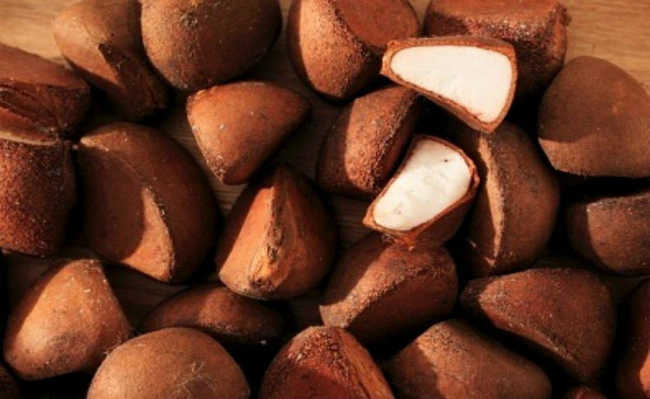What is andiroba oil used for
Andiroba oil serves as a repellent, treats itching, among other benefits

Andiroba is a large tree, native to the Amazon and can reach up to 30 meters in height. However, it is not a very strong plant. High intensity rains and winds can bring it down, putting its survival at risk. Andiroba flowers once a year, between the months of August and October, and fruit from January to May, which can vary according to the region.
Andiroba fruit is a capsule that opens when it falls to the ground, releasing four to six seeds. It is from these seeds that the oil is extracted. By using the seeds that fall from the trees, the extraction method is totally sustainable, as it does not harm the plant.
Oil production
First, the most suitable andiroba seeds are selected and cooked. Then, they are manually kneaded, forming a mass that will be used to extract the oil, which can occur in three ways: under sun, shade or pressing. In sun or shade, the dough is placed on a sloping surface where the oil flows. The pressing takes place in a straw press typical of the Amazon region, known as tipiti. Finally, the oil that has already been extracted undergoes filtration that removes unnecessary residues.
The andiroba oil obtained has a yellowish color, is extremely bitter and, when subjected to temperatures below 25°C, it solidifies, resembling the consistency of petroleum jelly. It contains tannins and fatty acids that have therapeutic properties, such as palmitic acid, myristic acid and oleic and linoleic acids, better known as omega 9 and omega 6, respectively.
Andiroba oil has antiseptic, anti-inflammatory, healing, insecticide and other benefits, which is why andiroba oil has been exported to cosmetic industries in France, Germany and the United States, as well as being marketed in different regions of Brazil.
applications
Andiroba oil has been used for a long time. The Indians began to use it to mummify their enemies' heads. Since then, its properties have been discovered and its use has expanded.
As it is an oil extracted from a tree located in the Amazon, its main application is in use as a natural repellent against insects. And due to its insecticidal action, it is widely used in the production of scented candles, in order to scare away insects and to make soap, helping to treat itching and stings caused by these, due to its healing property.
It can be applied undiluted to the skin in the affected area or to the body as a repellent, preventing insect bites. It is also great for treating lice and can be applied directly to the scalp.
But this insecticidal property is not just for the body. It can be applied to furniture and wood, preserving and protecting them from termites, in addition to increasing durability.
Andiroba oil is also widely used in massage therapy as a massage oil. It has a healing and anti-inflammatory action, which is enhanced when massaged, relaxing the muscles and relieving muscle pain and inflammation.
Due to this anti-inflammatory property, it also has an effect on bruises, swelling, rheumatism and skin diseases (wounds, redness and bruises). It helps in the regeneration of inflamed tissue and softens the skin - just rub it over the injured area.
In the cosmetics industry, it is widely used due to its emollient property, which provides hydration and nutrition to the skin and hair. It can be mixed in shampoos and creams, helping to combat hair loss and baldness.
As a moisturizer, it is best suited for those with curly, frizzy and very voluminous hair, as it provides shine, softness and controls the frizz. It also helps to restore brittle and split ends, leaving them looking shiny and healthy. For those who have oily hair, the ideal is to use it only at the ends of the hair so it doesn't get greasy.
On the skin, it helps fight cellulite and make blemishes and scars disappear, in addition to providing smoothness. It is worth remembering that some vegetable oils can contain chemicals that are harmful to health, such as parabens. Therefore, choose to always use them in 100% pure form. You can buy pure andiroba oil and others at eCycle store.
However, it is not suitable for human consumption orally. A study carried out by the Federal Universities of Pernambuco and Pará, published that oral consumption can negatively affect the functioning of the liver.
discard
It is also worth mentioning that the improper disposal of oils causes serious environmental impacts, mainly in terms of water contamination. Thus, the disposal of vegetable oils in drains and sinks is inadequate, as it can cause several environmental risks and also clog the pipes. Therefore, in case of disposal, look for the correct location for these products, place the andiroba oil residues in a plastic container and take them to a disposal point so that the oil can be recycled.
Find collection points closest to your home to properly dispose of andiroba oil.










